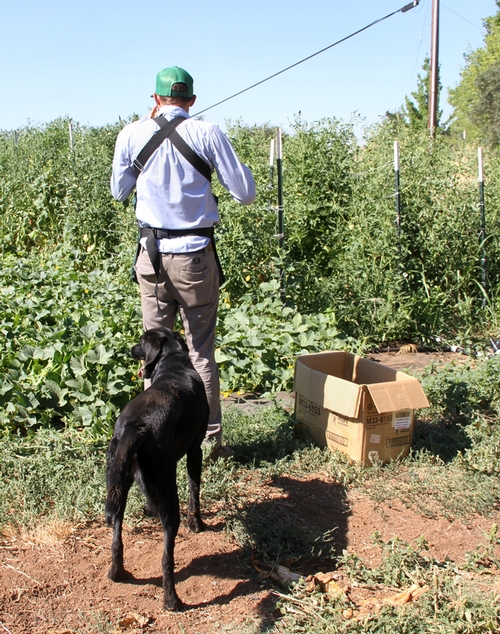
1. Understand that food safety on your farm is your responsibility. Good food safety practices can protect you and your customers. It is a cost of doing business. If you don't pay the cost upfront, it may cost you the farm if a customer gets sick.
2. Make a plan and keep good records. If it is not in writing, it does not exist as far as inspectors are concerned. Make a food safety plan and follow it. Monitor all areas on your farm on a regular basis, and keep records of what you do and when you do it.
3. Identify which produce is higher risk. Focus on reducing those risks first. Higher risk produce includes: produce eaten raw; produce that comes into direct contact with soil; and produce that is hard to wash such as salad mix, lettuce, strawberries, and cantaloupes. Don't assume that because your produce has a peel (e.g. cucumbers), it is lower risk. Additionally, do not pack damaged or dropped fruit. Foodborne illness pathogens can enter damaged fruit, as well as fruit that may have come into contact with animal feces on the ground.
4. Know the quality of your irrigation water. Irrigation water that touches the edible portion of your crop should be tested for foodborne illness pathogens such as E. coli. Compare your test results with the EPA's recreational water standards currently used by the Food Safety Modernization Act (FSMA).
5. Minimize risks when using compost and manure. Some foodborne illness pathogens can remain in manure for 3 months or more, so it is important to compost manures properly. Plan for 120 days between applying compost and harvest of a crop that comes into direct contact with soil. The interval required for a crop that does not come into direct contact with soil is 90 days. Document the application dates and what was applied. Be aware of your neighbors' use of manures as well, since pathogens can be airborne, carried in runoff water, or transported on equipment.
6. Be aware of possible contamination by animals. You cannot prevent all wildlife intrusion onto your farm, and many farms have working animals, livestock, and pets. You can make a pre-harvest assessment of your fields. If there is evidence of feeding damage or fecal contamination, you should not harvest affected plants and those growing in close proximity.
7. Keep vehicles and equipment clean. Reduce the risk of contamination by cleaning harvesting tools, farm equipment, and other vehicles used in harvest and transport of your produce. If a vehicle is used to transport anything other than produce, it should be cleaned and sanitized before using.
8. Know the flow of your produce from field to consumer, and identify sources of contamination. Identify every surface your produce touches. This includes packing containers, sorting tables, cooler shelves, etc. This will help you understand where contamination could enter your system and help you develop an effective cleaning and sanitation program. Cleaning contact surfaces should be the first line of your sanitation program. Remove dirt and debris from food contact surfaces with an appropriate detergent. Follow that with a sanitizer, which will not work properly if there is too much soil and debris.
9. Keep postharvest water clean. Use only potable water. If you are using a sink or tub of water to wash a batch of produce, add a sanitizer. Monitor sanitizer levels to prevent cross-contamination from the water or from one piece of produce to another.
10. Train your employees. This is the easiest and most financially effective food safety practice. Train your workers to be aware of food safety risks and how to follow proper on-farm procedures. Worker training includes hand washing and other hygiene practices; illness and accident procedures; and other standard food safety procedures for your farm.
Adapted from Rosemary Gordon's interview with Betsy Bihn, “How to Manage Food Safety Risks”. http://www.growingproduce.com/vegetables/how-to-manage-food-safety-risks/
CDFA California Small Farm Food Safety Guidelines: https://www.cdfa.ca.gov/is/i_&_c/pdfs/SFFSGbooklet-English.pdf
FSMA final rule on food safety: https://www.fda.gov/food/guidanceregulation/fsma/ucm334114.htm
http://ucanr.edu/sites/UrbanAg/Food_Safety_Handling_and_Processing_/General_Food_Safety_Information/